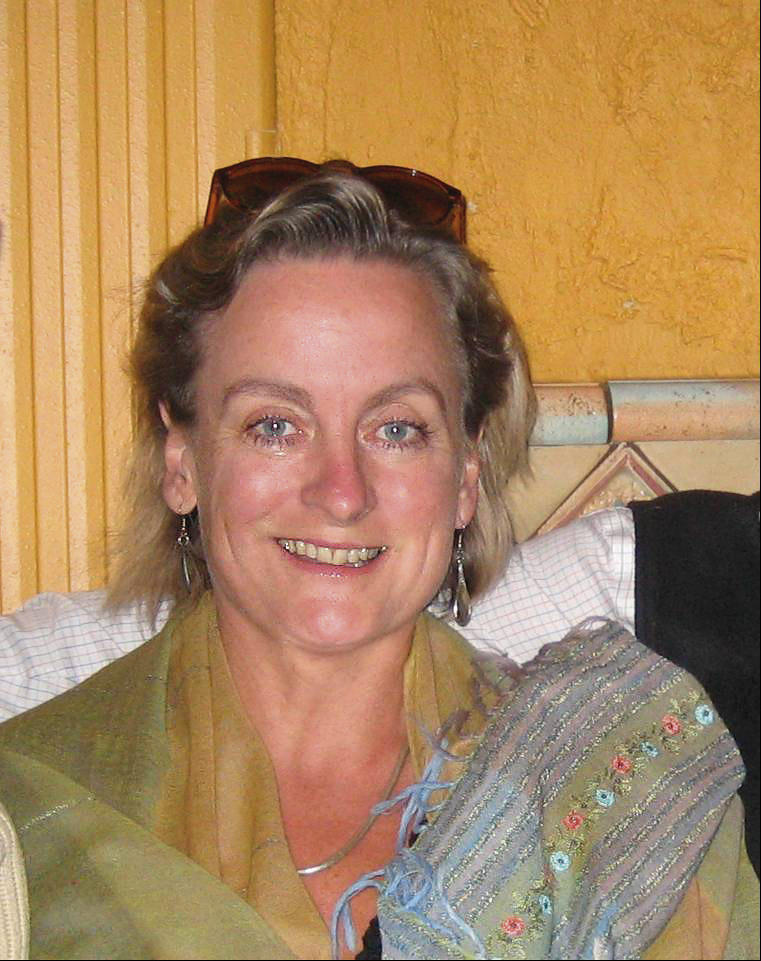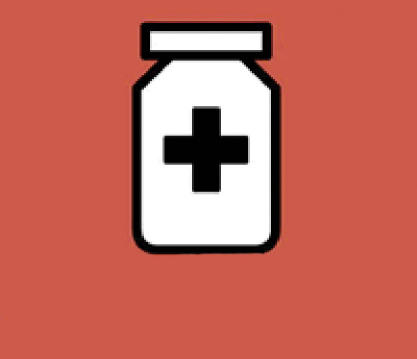

Many countries have signed the declaration of VISION 2020: The Right to Sight and have established national committees for the prevention of blindness. However, some governments still need to be convinced to allocate the resources needed to achieve the objectives of VISION 2020.
In planning advocacy aimed at governments, one has to choose those facts and arguments that will be most likely to convince them to act. One approach is to use studies that show the economic benefits of VISION 2020. For example, for each US dollar spent on eye care and on the prevention of vision loss, there is a five-dollar return to the community.1 In addition, it is estimated that VISION 2020 - if successful — will provide a global saving of US $223 billion over 20 years.2
The Gambia provides a key example. This low-income African country has demonstrated that an eye care programme based on the principles and recommendations of VISION 2020 can give an economic rate of return of 10% over a ten-year period (1986–1996).3
Another approach to advocacy aimed at governments is to focus on the relationship between VISION 2020 and the Millennium Development Goals (MDGs) - the United Nations' action plan to lift the world's population out of extreme poverty, and its consequences, by 2015.
Worldwide, governments of low- and middle-income countries are under enormous pressure to achieve the MDGs. Demonstrating to governments that a commitment to VISION 2020 will help them achieve these goals, rather than divert resources away from them, can be a way to convince governments to become more actively involved in the prevention of blindness and to allocate the necessary financial resources.
Indeed, seven of the eight MDGs depend on measures linked to the implementation of VISION 2020. This means that progress towards the goals of VISION 2020 will also help governments to achieve the MDG objectives - a win-win situation.
‘Worldwide, governments are under pressure to achieve the Millennium Development Goals’
In most countries, the first step in translating the MDG targets into action involves drawing up Poverty Reduction Strategy papers (PRSPs). This is how each country tailors the MDGs to its circumstances, sets its priorities, and involves key individuals and organisations in civil society and the corporate sector. Understanding the process of drawing up PRSPs at the national level, and finding ways to include prevention of blindness in these plans, is an essential step in linking VISION 2020 to the MDGs.
What follows is adapted from the International Agency for the Prevention of Blindness (IAPB) publication ‘Blindness, poverty and development - the impact of VISION 2020 on the Millennium Development Goals’.4 We hope that the facts given here will help you to persuade your government to commit the resources needed to support VISION 2020.
MDG 1: Eradicate extreme poverty and hunger
Target 1. “Halve, between 1990 and 2015, the proportion of people whose income is less than US $1 a day.”
Target 2. “Halve, between 1990 and 2015, the proportion of people who suffer from hunger.”
We tend to think of poverty purely in economic terms (e.g. low income and expenditure, unemployment, debt, lack of land ownership, and poor housing) but this only describes one aspect of poverty. In fact, the notion of poverty also encompasses other aspects of life, such as a lack of access to services (e.g. education, health care, poverty alleviation and literacy programmes, or development assistance). There are also social and psychological elements to consider when we think about poverty: lack of social contact, limited marriage prospects, poor self-esteem, exposure to stigma, violence, and abuse of authority, and not having the ability to make one's needs and feelings known in society. Poverty can, therefore, be thought of as the absence of opportunities to lead a life of dignity and respect.
If we think of poverty in this broader sense, the link between poverty and blindness becomes clearer; poverty can be both a cause and a consequence of blindness. Communities living in poverty are more likely to be affected by vitamin A deficiency, measles infection, and trachoma, all of which increase the risk of blindness. Conversely, individuals who are blind are less likely to be able to access eye care services, education, or rehabilitation. People who are blind remain ‘impoverished’ in the broadest sense of the word.
There is also a considerable body of evidence that blindness can lead to or exacerbate poverty, through lower productivity and inability to contribute to the family income. Studies have also shown that, after successful cataract operations, a high proportion of individuals return to their previous activities.
A successful VISION 2020 initiative would mean that, instead of the projected 75 million people worldwide likely to be blind by the year 2020, the number of people who are blind would be limited to 24 million. In view of what we have just mentioned, this will therefore reduce poverty and the proportion of people with an income of less than US $1 a day, as well as the proportion who suffer from malnutrition.
MDGs 2 & 3: Achieve universal primary education, promote gender equality and empower women
Target 3. “Ensure that all boys and girls complete a full course of primary schooling.”
Target 4. “Eliminate gender disparity in primary and secondary education preferably by 2005, and at all levels by 2015.”
The minister of health inaugurates the national Centre for refraction and low Vision training on World Sight Day, 11 october 2007. MADAGASCAR
Approximately 90% of visually impaired children in low-income countries do not go to school, and in most countries there are more boys than girls in schools for the blind. Some of the factors which prevent visually impaired children from attending school are: lack of infrastructure, suitable educational materials, or qualified teachers, as well as distance between home and school and lack of awareness on the part of parents. In addition, the lack of provision for children with low vision or refractive errors may also reduce school attendance and academic performance.
Blindness among adults in the family may keep children away from school. This is because, in many low-income countries, blind adults often depend on children of school-going age and on other family members to help them in their daily tasks.
VISION 2020 initiatives can contribute towards the MDG of universal primary education in four ways:
reducing blindness in adults, so that sighted children do not need to stay at home as carers
preventing blindness in children
ensuring that children with significant uncorrected refractive errors are identified and given the spectacle correction they need
linking eye care services to special education or other educational services for children who are visually impaired or blind.
MDG 4: Reduce child mortality
Target 5. “Reduce by two-thirds the mortality rate among children under five.”
It has been estimated that up to half a million children become blind each year; this roughly means that a child becomes blind every minute. It has also been estimated that, in low-income countries, up to 60% of children who become blind die within one or two years of becoming blind. The most important reason for this is that many of the conditions that lead to blindness in children are also causes of child mortality (e.g. measles, vitamin A deficiency, congenital rubella syndrome, or meningitis).
Global initiatives to control vitamin A deficiency and measles infection are succeeding not only in preventing child deaths, but also in preventing blindness. One of the VISION 2020 targets is to eliminate corneal scarring in children by the year 2020, and another is to almost halve the prevalence of blindness in children by controlling the avoidable causes. Both of these targets, if achieved, will contribute towards reducing child mortality. VISION 2020 activities can also reduce child mortality by improving water supplies and sanitation in areas where trachoma is endemic. This is likely to reduce diarrhoea, which is an important cause of vitamin A deficiency in children.
MDG 6: Combat HIV/AIDs, malaria, and other diseases
Target 7. “Halt and begin to reverse the spread of HIV/AIDS.”
Target 8. “Halt and begin to reverse the incidence of malaria and other major diseases.”
People living with disability, including blindness, may be more exposed to infectious diseases, because they are often not included in health promotion activities and cannot receive health education messages which rely on good vision (e.g. posters). People who are disabled also have reduced access to outreach and treatment services and find it more more difficult to follow treatment instructions if these are in written format. In short, preventing blindness may help to reduce the incidence of infectious diseases such as HIV and malaria.
‘Supporting VISION 2020 helps to strengthen global partnerships for development’
In addition, VISION 2020 may help to combat neglected infectious diseases through the example of the African Programme for Onchocerciasis Control (APOC). APOC has been highly effective at delivering Mectizan® to millions of people in Africa on an annual basis.
This provides a successful model, which has been adopted for the delivery of health interventions for other infectious diseases (for example, impregnated bed nets for malaria control).
MDG 7: Ensure environmental sustainability
Target 10. “Reduce by half the proportion of people without sustainable access to safe drinking water.”
One of the components of the SAFE strategy for trachoma elimination is to improve environmental hygiene by improving water supplies and reducing the number of potential breeding sites for flies.
If this ‘E’ (for environment) component of the SAFE strategy could be implemented in areas where trachoma is endemic, this would contribute towards achieving MDG 7.
MDG 8: Develop a global partnership for development
Targets 12-15 & 18 The actions countries must take at regional, national and international level in support of MDGs 1–7.
The strength of VISION 2020 lies in the existence of strong partnerships at all levels. At the international level, IAPB represents WHO and over 70 international and national organisations involved in the prevention of blindness.
At the national, regional, and community levels, VISION 2020 encourages strong partnerships between ministries of health, national and international organisations, professional organisations, and civil society groups. These are brought together in national prevention of blindness and/or VISION 2020 committees, which aim to improve eye care services and eliminate avoidable blindness.
Supporting VISION 2020 therefore helps to strengthen global partnerships for development.
Target 17. “In cooperation with pharmaceutical companies, provide access to affordable essential drugs in developing countries.”
VISION 2020 programmes ensure the availability of essential drugs for blindness prevention through the establishment of international, national, and regional partnerships for the control of onchocerciasis, trachoma, and childhood blindness.
Conclusion
Without the appropriate investment by governments, development agencies, and other funding bodies to support the implementation of the VISION 2020 programme, the MDGs will remain unattainable.
Practical tips 1
One of the best tools for advocacy is to demonstrate that VISION 2020 succeeded in countries or districts that are similar to the ones in which you are trying to effect change.
What you say should be supported by evidence based on research and by a thorough knowledge not just of the subject, but also of the situation in which national government finds themselves at present. What are their current goals, needs, and obstacles? Make sure you take those into account.
You will also need to know which are the highest levels and forums at which decisions are made, and you need to be prepared to engage with decision makers at those levels.
Practical tips 2
As is always the case with advocacy, you should approach governments prepared to answer the questions: ‘What is in it for us?’ and ‘Why should we do as you say?’. Here are some suggested answers:
Eliminating blindness and low vision is really important. After death and cancer, this is what people fear most
You promised you would (remind them of the MDGs, or World Health Assembly resolutions and World Health Organization (WHO) regional strategic documents that they may have already signed)
VISION 2020 is a WHO-supported programme and is contained in the WHO Medium-Term Strategic Plan 2008–2013
The elimination of avoidable blindness does not cost that much and it is very cost-effective. It is possible to make the best use of existing resources and to integrate the elimination of avoidable blindness into the health system
There are many others prepared to help: the corporate sector, local and international non-governmental organisations (NGOs), and professional bodies
VISION 2020 is not a vertical, NGO-driven programme. It is a comprehensive, integrated health programme. It is interested in, and will deliver on, the same things you care about, such as primary health care and strengthening your own health system
The VISION 2020 programme is meant to be implemented by government. Therefore, its success will get you votes! People appreciate having their sight restored. Civil servants need to see with reading spectacles to do their work, and children at school will realise their full potential with good vision.
Contributor Information
Hannah Faal, Senior Eye Care Programme Consultant, West Africa, Sightsavers International, PO Box 18190, 58 Patrice Lumumba, Airport, Accra, Ghana..
Clare Gilbert, Reader, International Centre for Eye Health, Chief Medical Advisor, Sightsavers International, UK; London School of Hygiene and Tropical Medicine, Keppel Street, London WC1E 7HT, UK..
References
- 1.Taylor HR. LXIII Edward Jackson Memorial Lecture: eye care: dollars and sense. Am J Ophthalmol. 2007;143:1–8. doi: 10.1016/j.ajo.2006.10.003. [DOI] [PubMed] [Google Scholar]
- 2.Frick KD, Foster A, Bah M, Faal H. The magnitude and cost of global blindness: an increasing problem that can be alleviated. Am J Ophthalmol. 2003;135:471–476. doi: 10.1016/s0002-9394(02)02110-4. [DOI] [PubMed] [Google Scholar]
- 3.Frick KD, Foster A. Analysis of costs and benefits of the Gambian eye care programme. Arch Ophthalmol Chic. 2005;123:239–243. doi: 10.1001/archopht.123.2.239. [DOI] [PubMed] [Google Scholar]
- 4.Vsit. www.v2020.org or email communications@v2020.org.










